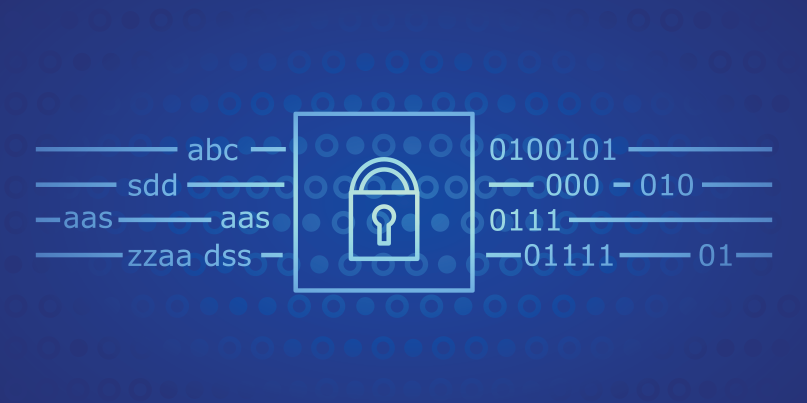From Encryption to Authentication: The Essentials of Digital Signatures, Keys, and Hashing.
 Affan Imran
Affan Imran
The need for secure communication and data security in today’s digital world is increasing at a high rate. In protecting online interactions and sensitive information, 3 essentials play a vital role, those are Encryption, Authentication, and Digital Signatures.
This blog will let you explore all the essentials of these key concepts. Providing an insight into the working mechanism of encryption, the potential of digital signatures in verifying the originality, and the role of hashing in ensuring data integrity.
By understanding these fundamental principles, we can get to know the importance of secure communication and the steps to protect digital transactions.
Understanding the Basics of Encryption:
Encryption:
Encryption is a method of protecting data in such a way that only an individual who holds the correct encryption key can decrypt/access that encrypted data.
Encrypted Data and Cipher Text:
To encrypt data, an encryption algorithm, and an encryption key is required. The output generated from the encryption process is ciphertext. Ciphertext can only be viewed in its original form if it is decrypted with the correct key.
The keys generated through encryption algorithms are of series of bits that are used for encrypting and decrypting the data.
Symmetric vs Asymmetric Encryption:
Encryption algorithms are often divided into two categories, Symmetric Encryption and Asymmetric Encryption. The fundamental difference between these two methods is that symmetric encryption algorithms make use of a single key. While in asymmetric encryption make use of two different related keys.
(Image Credits: https://aboutssl.org/symmetric-encryption-vs-asymmetric-encryption/)
(Image Credits: https://aboutssl.org/symmetric-encryption-vs-asymmetric-encryption/)
Exploring Digital Signatures:
Digital Signature is a cryptographic value, calculated from the data and a secret key that is only known by the signer/owner.
In simple words, a digital signature is a technique that secures the user/entity to the digital data.
Why there is a need for a Digital Signature?
In business applications, the requirement for data assurance and security is there since the dispute over exchanged data is very high. The receiver of the message needs confirmation that the message belongs to the sender and that the originality of the message retains (the sender should not be able to change the original version).
(Image Credits:https://www.esigngenie.com/blog/electronic-signatures-vs-digital-signatures/)
Public-Key and Private-Key Cryptography:
Used in encryption and decryption, the Public keys and Private keys are used to encrypt or decrypt sensitive data.
Private Key:
For encryption and decryption in private keys, the secret key is used. This key is symmetric. This means the key is only copied/shared by another party to decrypt the cipher text.
Public Key:
In a Public key, two keys are being used. For encryption, the public key is used to encrypt the plain text (to convert it into cipher text). For decryption, the private key is used to decrypt the cipher text(encrypted plain text).
Public and Private Key
(Image Credits:https://sectigo.com/resource-library/public-key-vs-private-key)
Private vs Public, which one is faster?
The private key is faster than public-key cryptography because it uses a single key for the encryption and decryption process.
Understanding Hash Functions:
Hash functions:
Hash is a mathematical function, that converts an input of any length into an encrypted output of a fixed length. Hash functions are “one-way”, and cannot be used to “reverse-engineer” the input from the hashed output.
When there is a change in a hashed file(input), the hash will change as well automatically.
Hashing:
Hashing is a process of transformation and generation of input data into a string. The input data can be of any length and the output generated is of a fixed size. Hashing is performed by a specific algorithm. SHA-256 (Secure Hashing Algorithm 256 bits) hash algorithm is of Bitcoin.
In cryptocurrency, hashing is essential to blockchain management.
(Image Credits:https://blockchainknowledge.in/what-is-hash-function-sha-256-in-blockchain-technology/)
Implementation of Cryptographic Hash Functions:
To prevent fraudulent transactions, double spending, and store passwords in blockchain the implementation of cryptographic hash functions is beneficial. The hash(output) generated through hashing is a unique number. According to the algorithm, the generated hash is not duplicable.
Role of Authentication:
What is Authentication?
The process of determining whether someone or something is, or who or what it says is Authentication. The authentication technology sees if a user’s credentials match the credentials in a database of authorized users or a data authentication server. During this process, authentication insure the secure systems, secure processes, and information security of the enterprise.
Authentication in Blockchain Technology:
Authentication in Blockchain refers to systems that verify the users to the resources which are found on the underlying technology of digital currency. To encrypt wallets or the places where value or work is stored securely, blockchain uses public-key cryptography.
Closing Thoughts:
The wide-ranging use cases of digital signature and hashing across the blockchain ecosystem could support different sectors. Some of the digital signatures and hashing notable applications include the execution of financial transactions and agreements with high security and data integrity.
The demand for blockchain applications is growing significantly. Therefore it's better to have a clear impression of the importance of digital signatures, keys, and hashing in blockchain technology.
Subscribe to my newsletter
Read articles from Affan Imran directly inside your inbox. Subscribe to the newsletter, and don't miss out.
Written by
